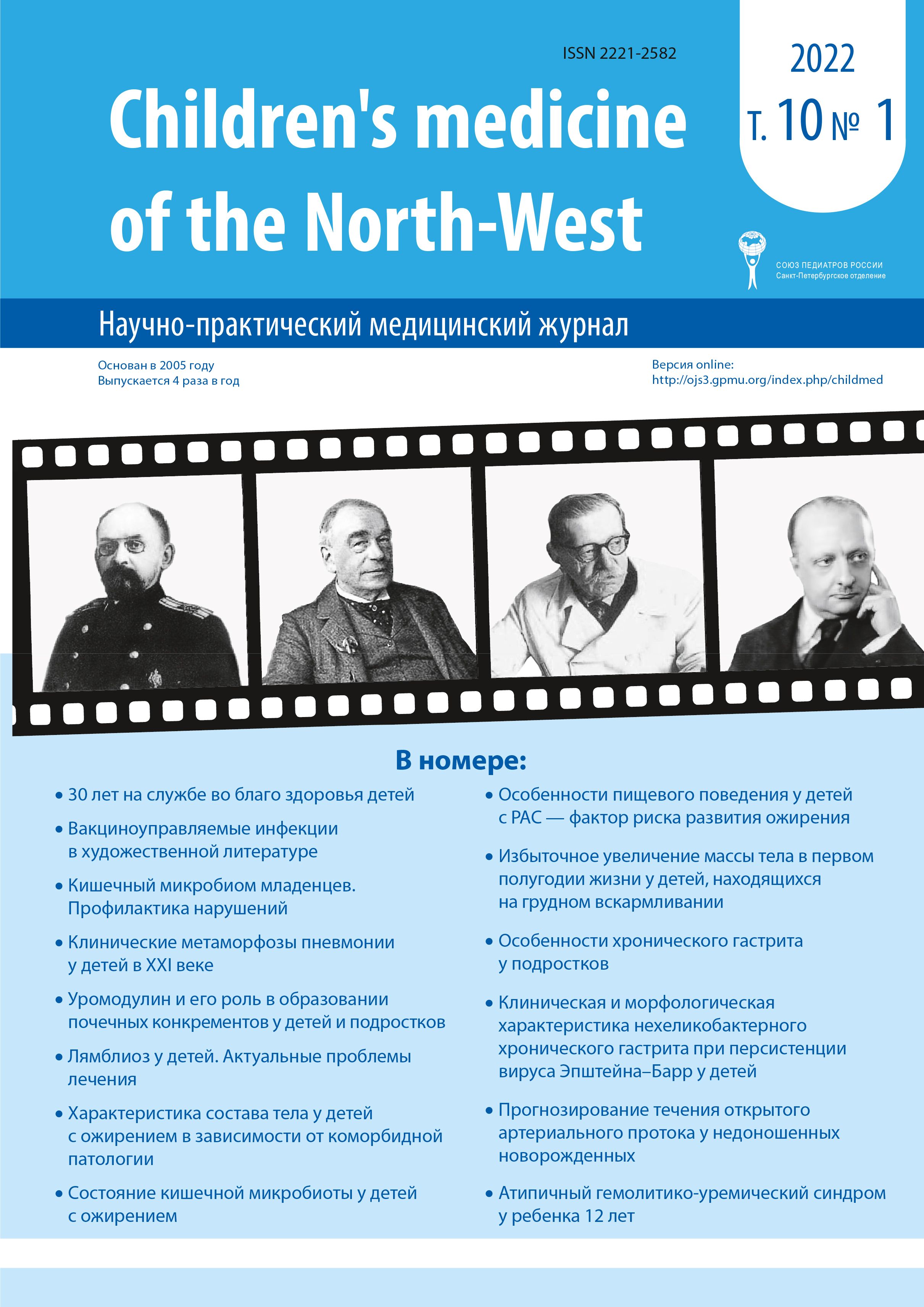ATYPICAL HEMOLYTIC-UREMIC SYNDROME IN A CHILD OF 12 YEARS OLD (CASE FROM PRACTICE)
Abstract
Introduction. Atypical hemolytic uremic syndrome is an orphan disease characterized by severe course, development of acute renal failure and extrarenal manifestations. The aim is to present a clinical case of atypical hemolytic uremic syndrome in a 12 year old child and the experience of successful management of the patient against the background of complement inhibitory therapy using the drug eculizumab. Material and methods. A case of atypical hemolytic uremic syndrome in a 12 year old child is described. The disease began acutely with manifestations of intoxication and abdominal syndromes, the next day there was a spotty papular and petechial rash, oliguria, arterial hypertension. According to the laboratory examination, non hemolytic anemia, thrombocytopenia, azotemia, increased lactate dehydrogenase activity were recorded, antibodies to complement factor H were detected with a decrease in its C3 fraction. Enteroinvasive, enteropathogenic, enteroagressive and enterotoxic strains of E. coli were not detected in the stool analysis. According to the totality of clinical and laboratory data, an atypical hemolytic uremic syndrome with acute renal failure and secondary arterial hypertension was diagnosed. Pathogenetic therapy with the drug eculizimab gave a persistent positive effect. Conclusion. The features of the presented case of atypical hemolytic uremic syndrome are the adolescent age of the patient at the time of the onset of the disease, its start with abdominal syndrome, the gradual increase of azotemia without pronounced oliguria against the background of severe microangiopathic anemia, the wave like nature of the course of the disease. The initiation of pathogenetic therapy made it possible to avoid the progression and relapses of the disease and the development of chronic renal failure.



